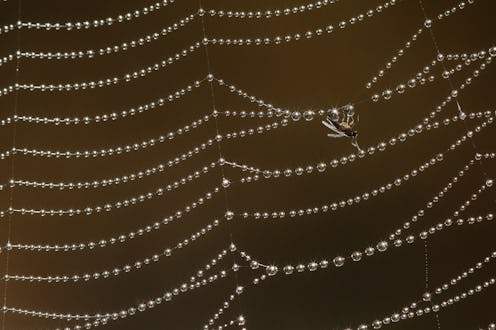Life
Science Says This Is The Best Way To Cure Your Fear Of Spiders

There are two types of people in this world: People who detest spiders, and people who pretend to tolerate those eight-legged arthropods. The American Psychiatric Association estimates that 9 percent of Americans have a specific phobia, and despite the Spider-Man franchise’s best efforts to push a pro-arachnid agenda, arachnophobia, or fear of spiders, consistently remains among one of the most common fears. Arachnophobes can now (tentatively) rejoice — science may have an interesting new method to quell their fears. A recent study found that exposing people who scored high for arachnophobia to their fear at the exact time as their heart beats was linked to reducing the phobia's severity.
A specific phobia is an excessive and persistent fear of a specific object, situation or activity that is generally not harmful, according to the American Psychiatric Association. The new research, published in the journal Psychosomatic Medicine, relied on the idea of exposure therapy, which is often an effective, if time-consuming, way to treat specific phobias. Exposure therapy is exactly what it sounds like: Patients are gradually exposed to their anxiety source to help them overcome their distress.
Testing a sample of 53 participants who scored high for fear of spiders, the study assigned participants to one of three computerized exposure conditions, varying what point in time the participants were presented with a picture of a spider within their cardiac cycle.
One group of patients was presented with spider photos in time with their heartbeats (during the signaling of cardiac arousal). The second group was exposed to spider pictures in between their heartbeats. Finally, the third group saw spiders randomly in the sessions, the timing not associated with their cardiac cycles at all. The researchers measured the participants’ anxious and phobic reactions, as well as assessed their physiological response.
The results indicated that the timing did, in fact, affect the outcome measures. While some improvement was exhibited across all groups, the participants exposed to spiders in time with their own heartbeats showed the greatest reduction in their anxiety levels, physiological responses, and self-reported fear of spiders. The physiological responses to the spider exposure were also notably strongest for this group. Basically, the study’s main finding is that timing stimuli exposure to the cardiac cycle may have some sort of therapeutic benefit for people dealing with phobias that definitely merits further research. Phobias could one day be treated more effectively on a personalized basis, timing exposure therapy to the patient's' own heart rhythms.
"Many of us have phobias of one kind or another - it could be spiders, or clowns or even types of food. Treatment usually involves exposing the person to their fear, but this can take a long time,” said Hugo Critchley, one of the study authors, in a statement. “Our work shows that how we respond to our fears can depend on whether we see them at the time our heart beats, or between heartbeats. You could say we're within a heartbeat of helping people beat their phobias."
As someone who is still scarred by Hagrid's terrifying giant spider "friend" from Harry Potter and the Chamber of Secrets, I don't exactly see my heart warming up to these creepy-crawlies any time soon. But this research may be a step in the right direction.